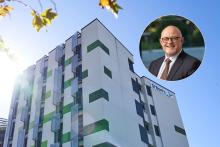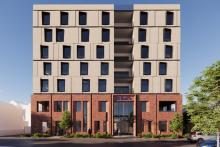Homelessness Week 2022


In Australia, there are over 116,000 people experiencing homelessness on any given night. More than 9,000 people experience homelessness every night in Western Australia.
Homelessness Week aims to raise awareness of the impact of homelessness on Australia via national and local community events, including providing information on the importance of housing as a solution and educating communities on how they can make a difference.
During this important week, many of Western Australia’s Not For Profits working at the coalface of this seemingly intractable challenge are gearing up to respond to this year’s theme – ‘To end homelessness we need a plan’. The objective is simple – to stop people experiencing homelessness – but the solutions are various and blighted by roadblocks along the way.
To mark Homelessness Week, Hearts & Minds invited WA’s NFPs with a particular focus on homelessness to contribute their vision to help reduce the number of Australians who call the street home.
A history of helping
St Bart’s was founded in 1963 as a small homeless shelter for men in East Perth. In 2023, St Bart’s will celebrate 60 years of standing by the side of vulnerable Western Australians experiencing or at risk of homelessness.
Having evolved and diversified since their humble beginnings, St Bart’s now provides progressive person-centred and trauma-informed recovery support to more than 500 people each day in Perth. Their consumer base has grown from single men experiencing homelessness to now include women, families and the elderly who are experiencing or at risk of homelessness, mental health challenges, trauma and hardship.
St Bart’s operates a variety of supported accommodation, including mental health villages, residential homeless aged care and transitional short-stay accommodation for men, women and parents who have experienced or found themselves facing homelessness. The majority of their accommodation sites provide 24/7 onsite support to assist residents in deciding what their goals are and next steps will be.
Vinnies WA runs three specialist homelessness services across Perth, including Tom Fisher House, which provides intensive intervention services for adults, and two Passages Youth Engagement Hubs – one in Perth, the other in Mandurah - which provide services to young people.
The Passages Hubs are delivered as a joint venture between Vinnies WA and the Rotary Club of Perth and Mandurah. These services operate within a Low Threshold and Change model enabling people who often can’t access other services to be given highly specialised support to find a pathway out of homelessness.
Vinnies is also a member of the West Australian Alliance to End Homelessness, and a committed participant in the Improvement Team aligned with the Zero Project.
Affordable homes are crucial
Currently, there is an affordable housing crisis coupled with the increasing cost of living, which is making it almost impossible for individuals and families on low incomes people to keep a roof overhead and food on the table, observed Vinnies WA CEO, Susan Rooney.
“Families are sleeping in their cars, in hostels, and even couch-surfing, all of which have a life-long impact on children’s lives and progress,” she said.
“In addition to jointly investing in social and affordable housing, the State and Commonwealth Governments need to work together to fund rental relief subsidies at an appropriate level.”
Vinnies WA believes the new Minister for Housing and Homelessness, the Hon Julie Collins MP, should address, as a matter of urgency, the need to develop the promised National Housing and Homelessness Plan and fund it appropriately.
“As part of the Plan, the Government should develop a specialised youth homelessness framework and fund approaches/services that are consistent with the best available evidence and practice to prevent and end youth homelessness,” said Ms Rooney.
There should also be an increase in the rate of the Commonwealth Rent Assistance payment by 50 per cent for low income households who are privately renting and expand the eligibility criteria.
“Soaring rents have dramatically outstripped increases to the payment,” said Ms Rooney.
“This has an impact on low income renters and their ability to cover costs. The current amount is simply not sufficient to enable vulnerable people who are privately renting to keep a roof over their head.”
The key goal of St Bart’s transitional accommodation services is to assist residents in securing long-term stable accommodation. But, with Perth’s worsening housing affordability and supply crisis being laid bare over the past few years, people residing in the services have had extended stays beyond the standard three months because there simply hasn’t been available or affordable social or private rental housing for them to move into.
St Bart’s Chief Executive Officer Samantha Drury said the lack of affordable housing options in Perth has kept their transitional and supported accommodation occupancies at or around capacity for the better part of the past three years.
“This has had a flow-on effect on the number of people enquiring about our services that we have, unfortunately, been unable to accommodate,” Ms Drury said.
“Compounding this sobering reality is that St Bart’s is also now being contacted by people who need help who have never experienced homelessness in the past, but rather are under extreme housing stress and at risk of homelessness due to Perth’s rising rents, home prices, the overall cost of living and shortage of social and affordable housing.
Ms Drury said a greater volume and range of new social and affordable housing is required in Western Australia.
“However, traditional unsupported social housing isn’t the solution for everyone journeying out of homelessness. For some people, their history of trauma and mental health and other challenges means different support models are required, along with different built forms,” Ms Drury said.
“For a small group of people exiting homelessness, the thought of having to commit to a long tenancy or independent living without others around them can be daunting.
“We have residents within our supported transitional housing services who say they don’t want a house and the responsibility that comes with it because they are not mentally or emotionally ready.
“Many of our transitional housing residents come to St Bart’s with a lot of trauma from their past experiences and associated mental health challenges, so asking them to sign a social housing Tenancy Agreement and head off to the suburbs to live – in the majority of cases on their own – isn’t the right solution for them from a housing or personal wellbeing perspective.”
This highlights a need for a broader range of new accommodation options to be delivered so people journeying out of homelessness can choose the one that is optimal for them to thrive, to support their recovery and move forward in life. In addition to traditional independent social housing, these options should include a greater volume of supported accommodation, short and long-term congregate living options, community villages and supported mental health accommodation.
“We need to ensure the full housing continuum of options is always there to meet people’s specific needs and goals and, within the continuum, there needs to be the removal of fear some people have of losing their chosen home as they journey towards recovery. If you remove that fear, I think people will be more open to choosing their preferred form of housing to live in that is optimal for them and their journey.
“Identifying the preferred housing solution for the person – and as chosen by the person – in parallel to wraparound support provision is vitally important to assist with recovery journeys. It’s about the right accommodation with the right support at the right time, as chosen by the person looking to take the next step on their recovery from homelessness. That’s the optimal approach.
“What we have seen here at St Bart’s through our BHP-funded Reconnecting Lives pilot program is that Housing First wraparound support is critical for our residents to succeed in sustaining and thriving in their new homes. Without it, the risk of residents sliding back into homelessness is high.”















